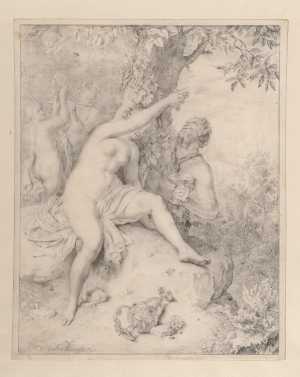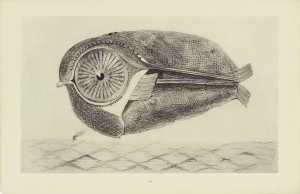Specifications
| Title | The Virgin of the Annunciation |
|---|---|
| Material and technique | Black chalk, pen and brown ink, brown wash, heightened with white, indented for transfer, faint framing lines with the pen and black chalk, on (discoloured) blue paper, which is entirely covered with charcoal on the reverse |
| Object type |
Drawing
> Two-dimensional object
> Art object
|
| Location | This object is in storage |
| Dimensions |
Height 247 mm Width 187 mm |
|---|---|
| Artists |
Draughtsman:
Abraham Bloemaert
|
| Accession number | AB 11 (PK) |
| Credits | Purchased 1930 |
| Department | Drawings & Prints |
| Acquisition date | 1930 |
| Creation date | in circa 1615-1618 |
| Signature | none |
| Watermark | large crowned coat of arms (of Prince Maurits of Orange-Nassau, 1567-1625; double quartered shield with postal horn, rampant lion, walking lion, bend and heart shields) (vH, 7P)(113x86 mm, on P2-5 from the left), very similar to Heawood 606 (no place, 1601 or after). The same watermark also present in inv.nr. MB 1961/T 41 by Bloemaert and in a Bloemaert drawing in the Fondation Custodia, Paris, inv. 1985-T.29 (Boon 1992, no 13). [AE] [for image click thumbnail above the 'zoom in' option] |
| Condition | worn lower left corner, smudged along the lower margin |
| Inscriptions | 'Fr' [?] (difficult to read; verso, top margin) |
| Mark | none |
| Provenance | Samuel van Huls, his (†) sale, The Hague (Swart), 14 May 1736 sqq., Album K, no. 439 (‘L’Annonciation de la Vierge’, one of two sheets); Dionis Muilman, his (†) sale, Amsterdam (De Bosch a.o.), 29 March 1773 sqq., Album N, no. 962 (‘De Boodschap aan Maria’, together with the print), fl. 20, to Metayer [copy RKD]; Cornelis Ploos van Amstel (1726-1798), Amsterdam, his (†) sale, Amsterdam (Van der Schley a.o.), 3 March 1800, Album X no. 6 (‘Twee stuks, toepasselyk op de Boodschap aan Maria […], door A. Bloemaert’, one of two drawings), fl. 15 to Andriessen [copy RKD]; Sale London (Sotheby’s) 25 July 1922, no. 44 (one of two sheets); acquired by the museum, 1930 |
| Exhibitions | Rotterdam 1980; Paris/Rotterdam 2014, no. 108 |
| Internal exhibitions |
Vroege Nederlandse tekeningen - Van Bosch tot Bloemaert (deel 2) (2015) |
| External exhibitions |
Bosch to Bloemaert. Early Netherlandish Drawings from the Museum Boijmans Van Beuningen (2014) Bosch to Bloemaert. Early Netherlandish Drawings (2017) |
| Research |
Show research Netherlandish Drawings of the Fifteenth and Sixteenth Centuries |
| Literature | Roethlisberger 1993, vol. 1, p. 216, under no. 277; Plomp 2001, pp. 202-203; Bolten 2007, no. 71 |
| Material | |
| Object | |
| Technique |
Indenting
> Indented
> Drawing technique
> Technique
> Material and technique
Indenting
> Indented
> Drawing technique
> Technique
> Material and technique
Brown wash
> Washing
> Wash
> Drawing technique
> Technique
> Material and technique
Heightened with white
> Drawing technique
> Technique
> Material and technique
|
| Geographical origin | The Netherlands > Western Europe > Europe |

























